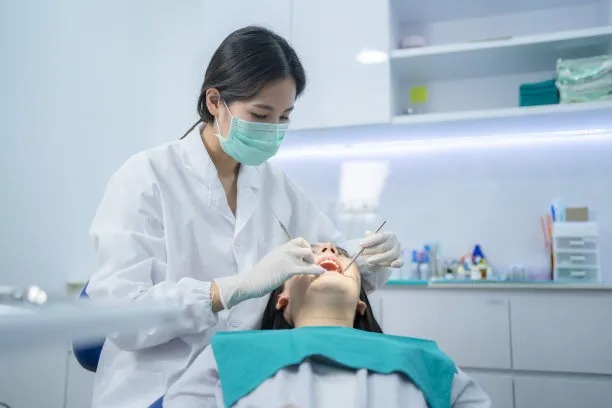Exploring Global Destinations Ranked by Affordability for Dental Tourism Enthusiasts
original:health91192025-02-21 14:24:09
Summary: The burgeoning trend of dental tourism has led to the emergence of various global destinations catering to those seeking quality dental care at affordable prices. This article delves into the
Summary: The burgeoning trend of dental tourism has led to the emergence of various global destinations catering to those seeking quality dental care at affordable prices. This article delves into the factors that have positioned certain locales as favorable spots for dental tourism enthusiasts. By exploring affordability and value, we present an informed guide to four highly rated destinations that balance cost and quality for dental procedures, illuminating the nuances and considerations that make these places attractive to international patients.
1. Cost-Effectiveness of Destinations

When it comes to dental tourism, cost-effectiveness is often the primary driver for destination selection. Patients typically look for locations where dental procedures are significantly more affordable than in their home countries. This affordability does not only encompass the cost of the dental procedure itself but also includes the overall expenditures related to travel, accommodation, and incidental expenses.
Countries such as Thailand, Mexico, and Hungary have become popular for their lower cost of living, which translates into cheaper dental services without compromising on the quality. These destinations offer savings up to 70% on procedures such as implants, crowns, and veneers when compared to Western countries. This financial benefit is a compelling reason for many to pack their bags.
Moreover, the accessibility of these destinations adds to their cost-effectiveness. Many are well-connected by international flights, reducing travel costs and making it more feasible for dental tourists to visit multiple times if necessary, such as for follow-up treatments or fittings for dentures.
2. Quality of Dental Care
The standard of medical services is a critical aspect for patients considering dental tourism. Prospective travelers not only hunt for affordable treatment but also insist on high-quality dental care. To cater to this, clinics in famed dental tourism hotspots often boast state-of-the-art facilities, adopting advanced technologies that are on par with, or sometimes even superior to, those found in Western dental practices.
Dentists in these countries are frequently trained internationally, with many holding certifications from Europe or North America, ensuring a level of professionalism and expertise that patients are accustomed to back home. Countries like Costa Rica and India shine in this aspect, where dental professionals are recognized for their skilled work in cosmetic and restorative dentistry.
Furthermore, the rise of international accreditation bodies, such as the Joint Commission International (JCI), has helped standardize the quality of care across borders, reassuring dental tourists that they will receive treatment that meets stringent global standards.
3. Cultural and Recreational Opportunities
While the main objective for dental tourists is often the medical procedure, the chance to experience a new culture is an enticing bonus. For some, the appeal of visiting a UNESCO World Heritage site or indulging in local cuisine may tip the scales when choosing their dental destination. These cultural experiences provide a value-added aspect to their medical journey, turning a necessity into a more holistic and memorable travel opportunity.
Destinations like Turkey offer a unique blend of Eastern and Western cultures, peppered with historic sites, bustling markets, and a vibrant culinary scene. Similarly, patients visiting South Africa for dental work can marvel at the natural beauty and splendor of places like Cape Town and the surrounding winelands, adding a touch of adventure to their trip.
Dental clinics often collaborate with travel agencies to offer package deals that combine treatment with tours and excursions, further enhancing the attractiveness of dental tourism and adding to the overall experience.
4. Supportive Infrastructure for Dental Tourists
The success of a dental tourism destination also hinges on the presence of a supportive infrastructure tailored to international patients. This includes the availability of multilingual staff, assistance with accommodations and transport, and the provision of comprehensive care plans that take into account the time constraints of traveling patients.
Countries like Spain and the Philippines excel in providing these supportive services, recognizing that a seamless experience is paramount for attracting and retaining dental tourists. Clinics offer concierge services that handle all logistic aspects of the stay, allowing patients to concentrate on their recovery and enjoyment.
Additionally, the existence of supportive networks and communities, such as online forums and past patient testimonials, gives newcomers insights and reassurance about their impending visits. The accumulation of positive experiences translates into a robust reputation, making these destinations progressively popular among new dental tourists.
Summary: To conclude, dental tourism has become a sophisticated industry with numerous global destinations vying for the attention of those seeking affordable yet high-quality dental care. The blend of cost-effectiveness, high standards of care, enrichment through cultural experiences, and comprehensive patient support are key attributes that mark a superior dental tourism destination. The sustainable growth of this sector is dependent on the continuous effort of host countries to deliver excellence at the intersection of healthcare and travel.
Individuals eager to embark on a dental tourism adventure now have a plethora of options. By judiciously selecting a destination that aligns with their financial, medical, and personal preferences, dental tourists can reap substantial benefits while enjoying an enriching travel experience.
This article is published by HEALTH9119 Medical Health Network